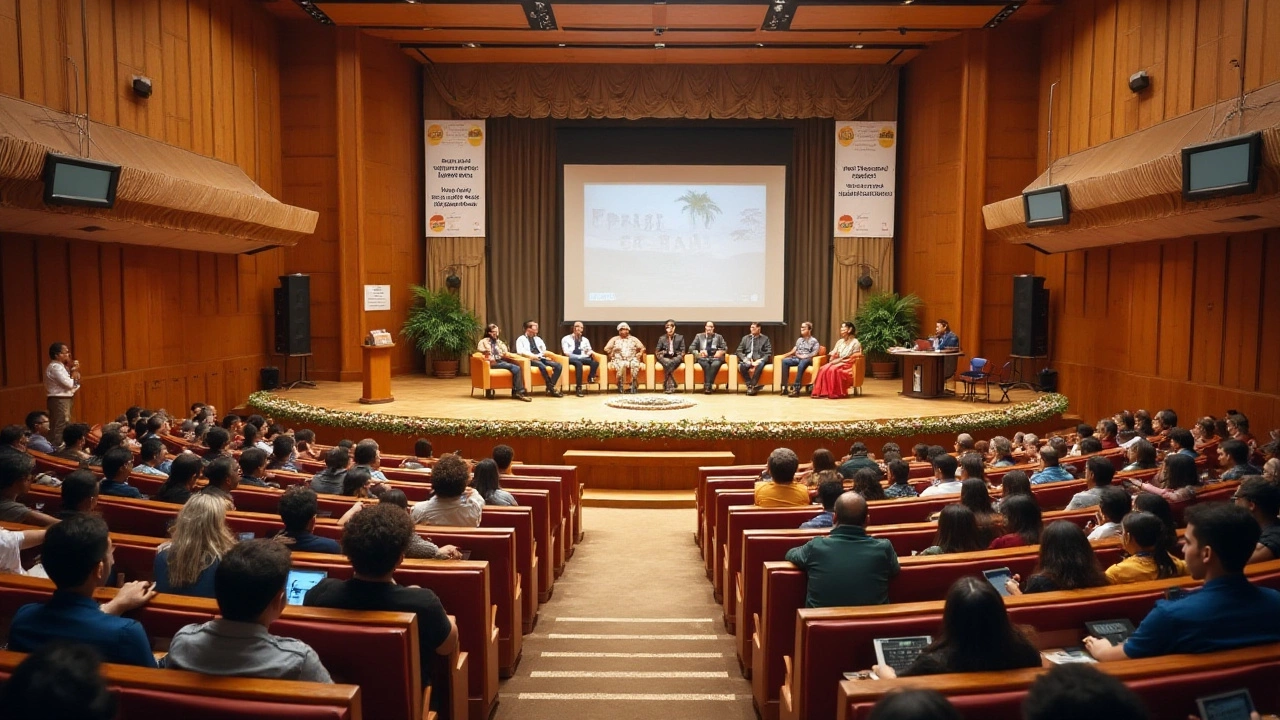Cancer, a word that strikes fear into the hearts of many, is not a singular disease but a collection of over 100 different diseases. Among them, certain types stand out for their swiftness in progression and resilience against conventional treatments. These are known as aggressive cancers, and they present unique challenges to both patients and healthcare providers.
What defines an aggressive cancer isn't just the speed at which it spreads, but also its ability to resist treatments, making it notoriously difficult to manage. Despite these challenges, modern medicine continues to advance, offering new hope through innovative treatments and groundbreaking research. In this exploration, we aim to shed light on what sets these relentless cancers apart, discuss current treatment approaches, and consider the future of cancer care.
- Defining Aggressive Cancer
- Characteristics of Aggressive Cancers
- Current Treatment Strategies
- Emerging Research and Future Hope
Defining Aggressive Cancer
Aggressive cancer is a term often used to describe cancer types that demonstrate rapid growth, swift progression, and strong resistance to typical treatment protocols. Unlike cancers that may grow slowly and remain localized, aggressive cancers move fast, exploiting their host's natural resources to fuel their quick spread through the body. This swift progression challenges patients and healthcare professionals, often necessitating immediate and intensive treatment strategies aimed at curbing its relentless advance.
The characteristics that define an aggressive cancer revolve around its biology and behavior. Such cancers have high-grade tumors, metabolism rates that eclipse normal cell activity, and a pronounced ability to invade nearby tissues and organs. Aggressive cancers also tend to metastasize quickly, meaning they spread to distant parts of the body more eagerly than their less aggressive counterparts. These factors can often result in a poor prognosis if not detected and managed promptly. Early diagnosis is crucial, yet even when caught early, devising an optimal treatment plan requires complex decision-making juggling aggressive tactics and the patient's quality of life.
The science behind why some cancers are more aggressive than others is an ongoing area of research. Genetic mutations play a significant role, providing malignant cells with the tools to divide uncontrollably and avoid destruction by the immune system. Abnormalities in oncogenes and tumor suppressor genes, for instance, can give these aggressive cancers a distinct advantage, making them difficult adversaries. Interestingly, studies have found that certain lifestyle factors and environmental exposures might exacerbate the aggressive nature of some cancers, warranting a multi-pronged approach in both prevention and treatment.
As Dr. Liam Murray from the Oncology Research Institute once remarked, "Understanding the driver mutations that lead to such rapid progression is like assembling a complex jigsaw puzzle. Each piece offers crucial insights that could lead to significant breakthroughs in combating these formidable diseases."
An array of cancers falls under the aggressive category, including pancreatic cancer, glioblastoma, and certain subtypes of breast cancer, such as triple-negative breast cancer. In an attempt to offer more targeted treatments, researchers are currently deciphering the genetic makeup of these cancers, using advancements in personalized medicine to craft individualized treatment plans. In addition to understanding the genetic components, considering the cancer's grade, stage, and the presence of specific molecular markers can guide the therapy process. Personalized medicine has emerged as a beacon of hope for many, offering tailored approaches that can mitigate some of the aggressiveness these cancers inherently possess.

Characteristics of Aggressive Cancers
The term aggressive cancer often refers to malignancies that grow and spread rapidly, posing significant challenges for treatment and management. Such cancers can be identified by specific characteristics, which are critical to understanding their behavior and developing appropriate treatment strategies. One of the primary features of these cancers is their high rate of cell division. This rapid proliferation allows tumors to quickly invade surrounding tissues and, in many cases, metastasize to distant organs with alarming speed. The accelerated growth also contributes to the lethality of these cancers, as they often outpace the body's ability to contain them.
Another hallmark is their resilience to standard therapies. Aggressive cancers have developed sophisticated mechanisms to evade destruction. This resistance can be due, in part, to the mutations within cancer cells that render chemotherapy or radiation therapy less effective. Moreover, the genetic diversity seen within aggressive tumors presents an additional obstacle, as different cell populations within the same tumor may respond to treatment in varied ways. This heterogeneity necessitates a more personalized treatment approach, often incorporating a combination of therapies to increase chances of success.
Certain aggressive cancer types, such as pancreatic cancer and glioblastoma, are known for their ability to create supportive microenvironments that facilitate unchecked growth. Tumors often manipulate surrounding cells and tissues, fostering conditions that enhance their survival and spread. The tumor microenvironment can be altered to suppress the body's immune response, effectively hiding the cancer from immune surveillance. Understanding the interactions within these environments is a key focus of current research, with the goal of disrupting these life-sustaining networks and making tumors more vulnerable to treatment.
According to a prominent oncologist, "One of the biggest challenges with aggressive cancers, such as glioblastoma or pancreatic cancer, is their ability to adapt quickly, making it difficult to remain ahead in treatment.” This adaptability not only underlines the complexity of aggressive cancers but also emphasizes the necessity for continuous research and innovation. Such adaptations enable the cancer to circumvent therapeutic interventions, which can lead to early recurrence or progression despite aggressive treatment attempts.
To further highlight these characteristics, it's essential to recognize the distinct markers and genetic variations present in many aggressive cancer types. These genetic alterations often serve as both drivers of cancer behavior and potential targets for new therapies. For instance, in some aggressive breast cancers, the overexpression of HER2 (Human Epidermal growth factor Receptor 2) can lead to rapid growth and spread, but also provides a target for specific drugs designed to counteract that growth by blocking the receptor. The study of these genetic and molecular traits continues to offer promising avenues for more effective interventions and a better understanding of what makes these cancers so formidable.

Current Treatment Strategies
Tackling aggressive cancer types requires a robust and often multi-faceted approach. Physicians employ a combination of therapies aimed at slowing down the cancer's progression, managing symptoms, and ideally achieving long-term remission. The choice of treatment is influenced by the type and stage of cancer, its genetic makeup, and the patient’s overall health. However, in recent years, there has been a significant shift towards personalized medicine, where treatments are tailored to the individual’s genetic profile. This personalization has shown promising results, especially for hard-to-treat cancers.
Chemotherapy remains one of the staple treatments for aggressive cancers. This systemic therapy uses drugs to destroy cancer cells by targeting rapidly dividing cells. While traditional chemotherapy can be effective, it often comes with a host of side effects due to its impact on healthy cells. Recent advancements have led to the development of more targeted chemotherapy agents that aim to minimize these adverse effects.
Radiation therapy often complements chemotherapy in the treatment regimen. It uses high doses of radiation to kill cancer cells or inhibit their growth. Innovation in this field has introduced techniques like stereotactic radiosurgery and intensity-modulated radiation therapy, which allow higher doses of radiation to be focused on the tumor with precision, sparing healthy tissue. These methods have significantly improved outcomes for patients with certain types of brain and neck cancers.
Immunotherapy represents a groundbreaking therapeutic area that has transformed the landscape for many patients battling aggressive cancers. By harnessing the body’s immune system, immunotherapy agents such as checkpoint inhibitors have redefined outcomes for cancers like melanoma and non-small cell lung cancer. Furthermore, CAR T-cell therapy, which involves modifying a patient’s T cells to better attack cancer cells, has shown especially promising results in blood cancers. A renowned oncologist has remarked,
"The future of cancer treatment lies in the power we can harness from the immune system itself, unlocking potential we've only just begun to tap."
An insightful example of progress is the use of targeted therapies. These drugs target specific molecules or pathways critical to cancer cell survival. For instance, HER2 inhibitors are pivotal in the treatment of HER2-positive breast cancers. Often combined with other treatments, targeted therapies can control the disease, even when it spreads. Despite their effectiveness, resistance remains a key challenge, prompting ongoing research to overcome these hurdles. Surgeons might also play a role in treatment, especially when the cancer is localized. Surgery can remove tumors entirely or decrease their size before other treatments.
Additionally, researchers are investigating the potential of combining treatments to enhance efficacy. Clinical trials are exploring the synergy between immunotherapies and traditional methods, including their potential to reduce the need for more toxic therapies. This combined approach could revolutionize how we manage cancer treatment, offering new hope to those facing aggressive forms of cancer. Personalized medicine continues to gain traction with oncologists utilizing genome sequencing to better understand genetic mutations at play, making it possible to select the most effective and least harmful treatments for each patient.

Emerging Research and Future Hope
As the battle against aggressive cancer continues, researchers are making incredible strides in understanding and developing new approaches to treatment. The field of molecular oncology is one of the exciting frontiers promising to redefine how these formidable cancers are diagnosed and managed. By delving into the genetic underpinnings of cancer cells, scientists are uncovering specific mutations responsible for aggressive behaviors. This knowledge paves the way for targeted therapies designed to inhibit these mutations, thus slowing down or even halting the cancer’s progression. One key area of research is immunotherapy, which harnesses the body's immune system to identify and destroy cancer cells. Although still in its early stages, the results from various clinical trials have been promising and hint at a future where these therapies could become a standard option for treating aggressive cancers.
The advent of personalized medicine marks another transformative shift in cancer treatment. Tailoring treatment plans based on the patient’s genetic profile means that therapies can be more targeted, thus reducing the trial-and-error approach of traditional treatments. This can significantly improve outcomes and reduce the harsh side effects often associated with chemotherapy and radiation. Additionally, machine learning and artificial intelligence are revolutionizing cancer research by enabling faster analysis of complex data sets. With these technologies, researchers can identify patterns and correlations in how aggressive cancers behave and respond to different treatments. Such insights are invaluable, as they guide the development of more effective treatment protocols. In fact, it’s not just about extending life by months or years, but also about enhancing the quality of life during the treatment.
Promising Clinical Trials
The world of cancer research is brimming with clinical trials exploring new drugs, treatment combinations, and even lifestyle interventions that could make a difference in managing aggressive cancers. For instance, trials on combination therapies—where two or more treatment methods are used together—are showing great promise. These combinations can sometimes lower the dosage needed for each treatment, thereby reducing side effects without compromising efficacy. The FDA has also fast-tracked some of these experimental therapies, acknowledging their potential to revolutionize care for aggressive cancer types. The collaboration between pharmaceutical companies and research institutions is at an all-time high, leading to accelerated timelines from concept to available treatment. There's a renewed spirit of innovation, as evidenced by the variety of tactics being employed in trials, from vaccines specifically designed for cancer to innovative gene-editing techniques like CRISPR.
Dr. Lisa Coussens, a leading researcher in the field, captured the spirit of this evolving landscape beautifully: "Every breakthrough takes us one step closer to a world where cancer no longer dictates the terms of life and health." Her words echo the optimism that fuels scientists and patients alike in seeking tangible progress against the most aggressive forms of cancer.
Hope on the Horizon
The landscape of cancer care is constantly evolving, and with each passing day, we inch closer to potentially groundbreaking solutions for aggressive types of cancer. Researchers are embracing a multidisciplinary approach, which combines expertise from various fields to tackle cancer from multiple angles. This involves not only oncologists and biologists but also chemists, engineers, and data scientists working together to see the problem from all sides. By fostering a culture of collaboration, breakthroughs are not left to chance but approached with strategic precision. The promise of emerging research and the dedication of countless researchers worldwide keep hope alive, signaling a future where cancer research continues to unravel the mysteries of this complex disease, promising new hope and improving survival rates. These advances remind us of the resilience of the human spirit and the relentless pursuit of knowledge in the quest to conquer one of humanity's greatest adversaries.

 Can You Live Independently After Open-Heart Surgery? Essential Tips and Insights
Can You Live Independently After Open-Heart Surgery? Essential Tips and Insights
 Unveiling the World's Riskiest Heart Surgeries: Insights and Precautions
Unveiling the World's Riskiest Heart Surgeries: Insights and Precautions
 Unveiling the Secrets of Vitamin C for Radiant Skin
Unveiling the Secrets of Vitamin C for Radiant Skin
 IVF Cost per Cycle: How Much Does One Round Really Cost?
IVF Cost per Cycle: How Much Does One Round Really Cost?
 What Is the Golden Hour in Ayurveda? The Secret to Daily Balance and Vitality
What Is the Golden Hour in Ayurveda? The Secret to Daily Balance and Vitality